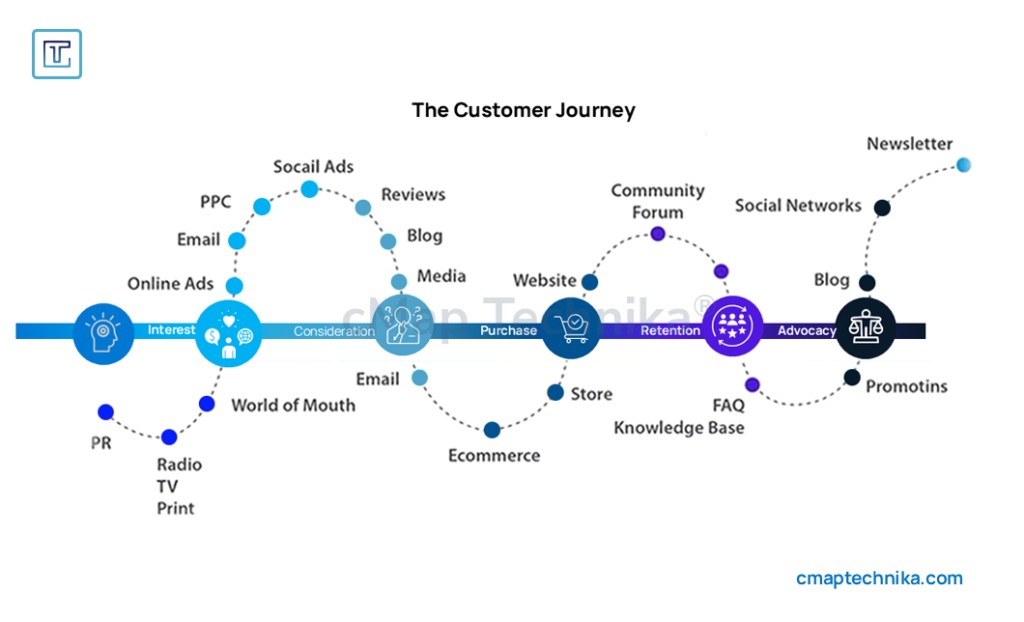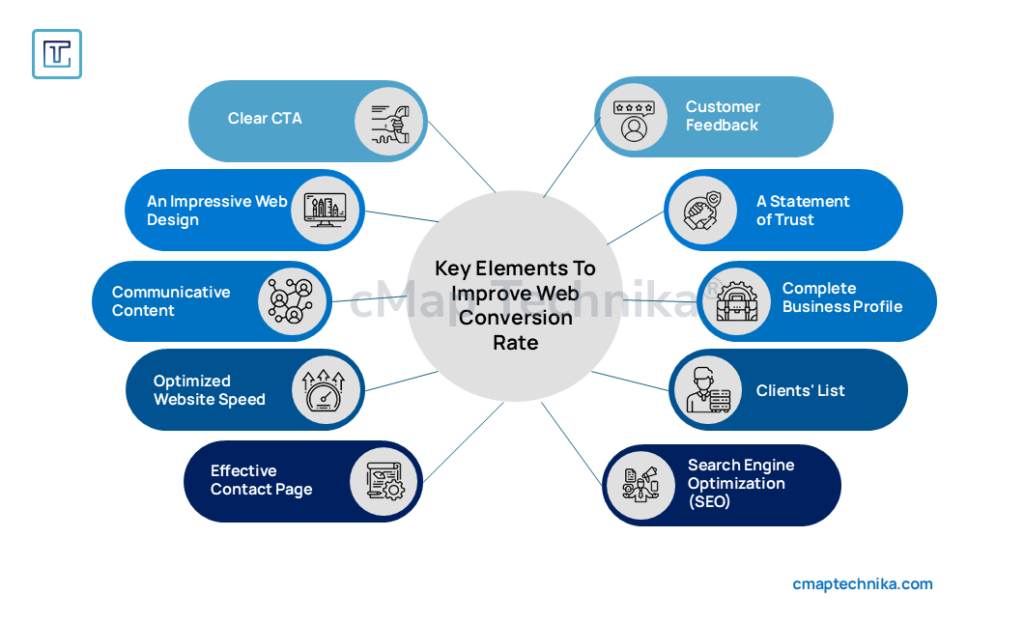Introduction

The global e-commerce market is projected to reach $8.1 trillion by 2026, with over 24% of total retail sales expected to happen online. However, while traffic to online stores is growing, conversion rates remain stubbornly low—averaging around 2% to 3% across industries. This discrepancy underscores a fundamental challenge for e-commerce businesses: attracting visitors is no longer enough; converting them into customers is where the real challenge lies.
The modern consumer expects a seamless, intuitive shopping experience. Slow load times, complex navigation, lack of trust signals, and limited payment options can drive potential buyers away within seconds. High-converting online stores succeed by addressing these issues through strategic design, performance optimization, and targeted personalization.
This white paper outlines the core principles behind high-performing online stores, highlighting industry best practices and real-world examples of brands that have mastered the art of conversion.
Understanding the Customer Journey and Conversion Funnel

To create a successful online store, it’s important to recognize the customer journey through the conversion funnel. Here’s how you can optimize each stage:
- Awareness – At this stage, potential customers first become aware of your brand. This can be through various touch points like PR, online ads, PPC campaigns, and social media. Consider leveraging traditional and digital channels such as TV, radio, and print media to create broader visibility.
- Interest – Once customers are aware of your brand, you need to capture their interest. Create engaging content, like blog posts and media articles, and establish a presence on social networks. Social ads are also effective in keeping the audience engaged, providing them with useful content that fuels curiosity about your offerings.
- Consideration – This is where customers start evaluating your products or services against alternatives. To nurture this stage, focus on reviews, detailed product blogs, and email marketing campaigns. Having an effective website or ecommerce platform also plays a significant role in facilitating comparison and reinforcing your brand’s credibility.
- Purchase – The decision-making stage is where customers make their purchase. A user-friendly website, an intuitive checkout process, and multiple payment options can ease this transition. Also, offering a store experience (whether online or physical) and FAQs or knowledge base sections help address last-minute doubts.
- Retention – Once the customer has purchased, it’s crucial to keep them engaged. Utilize strategies like newsletters, exclusive promotions, and community forums to encourage repeat business. Maintaining a relationship after purchase helps build loyalty and reduces churn.
- Advocacy – When customers are truly satisfied, they become advocates for your brand. Encourage them to share their experiences through reviews, blog posts, and promotions. Engaging your customers in your brand’s community creates ambassadors who help spread the word and attract new potential customers.
Key Components of High-Converting Online Stores

1. Site Speed and Performance
Research shows that 53% of visitors abandon a site that takes more than three seconds to load. Fast load times are non-negotiable for a high-converting store.
Best Practices:
- Use content delivery networks (CDNs) to serve static assets more quickly.
- Optimize images using next-gen formats like WebP to reduce file size without sacrificing quality.
- Minify and compress JavaScript, CSS, and HTML files to improve loading speeds.
- Enable lazy loading for images and videos to reduce initial load times.
Case Study:
ASOS, a global fashion retailer, reduced its page load time by 50% by switching to a CDN and optimizing media assets. This resulted in a 12% increase in conversion rates and a 20% increase in customer retention.
2. User Experience and Navigation
An intuitive and frictionless user experience is key to guiding customers toward checkout. Poor navigation and cluttered designs confuse users and increase bounce rates.
Best Practices:
- Implement a sticky navigation bar with clear product categories and a prominent search function.
- Use breadcrumbs and filters to simplify product discovery.
- Design a responsive layout that adapts seamlessly to mobile, tablet, and desktop screens.
- Include a visible shopping cart icon and allow easy editing of cart contents.
Example:
Zappos increased its conversion rate by 20% after simplifying its homepage navigation, introducing clear product categories, and adding customer reviews to product pages.
3. High-Quality Product Presentation
Consumers rely heavily on visual and descriptive cues when making purchase decisions online. Poor-quality images or insufficient product information can deter buyers.
Best Practices:
- Use high-resolution images with zoom-in capabilities.
- Include 360-degree product views and product videos where possible.
- Write detailed product descriptions that cover key features, benefits, and care instructions.
- Incorporate user-generated content such as customer reviews and social proof.
Case Study:
Warby Parker, an eyewear brand, increased its sales by 30% after adding virtual try-ons and customer-generated content (UGC) to its product pages, enhancing customer confidence.
4. Mobile-First Optimization
Over 70% of e-commerce traffic now comes from mobile devices. A seamless mobile experience is essential for maximizing conversions.
Best Practices:
- Adopt a mobile-first design strategy with larger touch targets and easy scrolling.
- Enable auto-fill for form fields and simplify the checkout process.
- Minimize page load time using lightweight code and optimized media.
- Test for cross-device and cross-browser compatibility.
Example:
Nike reported a 30% increase in mobile conversions after launching a mobile-optimized website and incorporating single-page checkout functionality.
5. Streamlined Checkout Process
A complicated checkout process is one of the leading causes of cart abandonment. Nearly 70% of online shopping carts are abandoned before completion.
Best Practices:
- Offer guest checkout to avoid forcing customers to create an account.
- Display progress indicators to help customers understand the checkout steps.
- Provide multiple payment options, including credit cards, PayPal, Apple Pay, and BNPL (Buy Now, Pay Later).
- Remove unnecessary form fields and auto-populate customer data where possible.
Example:
Amazon reduced checkout abandonment rates by 15% after introducing a one-click checkout option.
6. Personalization and AI Integration
Personalized shopping experiences increase engagement and drive repeat purchases. AI-driven recommendations and targeted content help retailers engage customers more effectively.
Best Practices:
- Use AI-driven recommendation engines to suggest relevant products based on customer behavior.
- Implement dynamic pricing to offer discounts and incentives in real time.
- Create targeted email and SMS campaigns based on customer segments.
Case Study:
Sephora increased customer retention by 25% after implementing an AI-based recommendation engine that customized product suggestions based on purchase history and browsing behavior.
Challenges and Solutions
1. Cart Abandonment
Challenge: Customers abandon carts due to complex checkout processes or unexpected costs.
Solution: Simplify the checkout process, eliminate hidden fees, and provide clear shipping and return policies.
2. Traffic but No Conversions
Challenge: High traffic with low conversion rates.
Solution: Improve product pages, simplify navigation, and implement targeted remarketing campaigns.
3. Limited Customer Retention
Challenge: One-time buyers who don’t return.
Solution: Use loyalty programs, personalized offers, and post-purchase follow-ups to encourage repeat purchases.
Conclusion
High-converting online stores are not the result of chance—they are the product of strategic design, user experience, and performance optimization. Businesses that focus on simplifying the shopping journey, personalizing customer interactions, and ensuring seamless mobile experiences will consistently outperform their competitors.
In a rapidly evolving e-commerce landscape, the brands that adapt to changing consumer behavior, leverage AI-driven insights, and streamline the path to purchase will achieve sustainable growth and customer loyalty. This white paper serves as a blueprint for building a high-performance online store capable of thriving in the competitive world of digital commerce.






